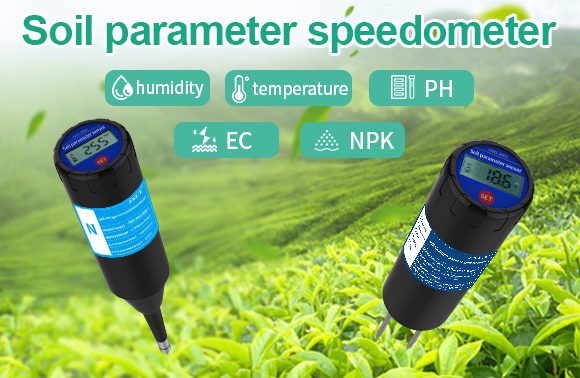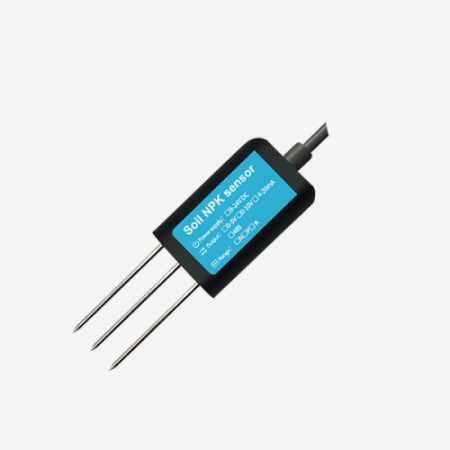Soil NPK sensor has become as valuable tools for assessing and managing soil fertility, enabling precision agriculture practices. Soil nutrient management is a critical aspect of modern agriculture, influencing crop productivity, sustainability, and environmental impact. NPK are essential nutrients for plant growth, and their availability in the soil directly affects crop yield and quality. This paper explores the advancements in soil NPK sensor technology, their applications, implications for precision agriculture and sustainable crop production.

Advancements in Soil NPK Sensor Technology
Traditional methods of soil nutrient analysis, such as laboratory soil testing, are time-consuming and laborious. In contrast, soil NPK sensors provide real-time, on-site measurement capabilities, and we are able to assess soil fertility. As a result, informed decisions on nutrient application and management are made. Recent advances in soil NPK sensor technology are improving accuracy, portability and data integration to enhance effectiveness in agricultural environments.
Advanced sensor technologies, including spectroscopy, electrochemical sensors, and ion selective electrodes. Integrated into the soil NPK sensor, the nutrient concentration can be measured quickly and accurately. Optical spectroscopy techniques, such as near-infrared spectroscopy (NIR), use the unique spectral characteristics of soil composition to quantify NPK concentrations with high precision. Electrochemical sensors and ionoelectrics provide selectivity for specific ions, allowing direct measurement of nutrient levels in the soil.

In addition to sensor technologies, the integration of data processing algorithms, wireless connectivity, and geographic information systems (GIS) has enhanced the capabilities of soil NPK sensors for spatial mapping, data visualization, and decision support. These advancements enable the generation of detailed soil fertility maps, guiding targeted nutrient application and optimizing resource use in precision agriculture practices.
Applications of Soil NPK Sensors in Precision Agriculture
Soil NPK sensors have diverse applications in precision agriculture, supporting informed decision-making and efficient nutrient management across various cropping systems. In-field soil NPK measurements provide valuable insights into the spatial variability of soil fertility, allowing for site-specific nutrient management strategies tailored to the specific needs of different crop zones. By using soil NPK sensors to create fertility maps, farmers can implement variable rate nutrient application, optimizing fertilizer use and minimizing environmental impact.
Furthermore, soil NPK sensors play a crucial role in monitoring nutrient dynamics throughout the growing season, enabling the timely adjustment of fertilizer applications to meet the changing nutrient demands of crops. Real-time soil NPK measurements facilitate the implementation of responsive nutrient management practices, reducing the risk of over-fertilization, nutrient leaching, and environmental pollution while maximizing crop yield and quality.
Implications of Soil NPK Sensors for Sustainable Agriculture
The adoption of soil NPK sensors has significant implications for sustainable agriculture, contributing to improved nutrient use efficiency, reduced environmental impact, and enhanced crop productivity. By enabling precise and targeted nutrient management, these sensors support the optimization of fertilizer application, minimizing the risk of nutrient runoff, leaching, and eutrophication of water bodies. This, in turn, promotes environmental stewardship and helps mitigate the negative effects of agricultural nutrient pollution on ecosystems.

Moreover, the data generated by soil NPK sensors can inform long-term soil fertility management practices, aiding in the development of sustainable crop rotation, cover cropping, and soil amendment strategies. By understanding the spatial and temporal variability of soil NPK levels, farmers and agronomists can implement practices that enhance soil health, promote biodiversity, and support the long-term sustainability of agricultural systems.
Conclusion
In conclusion, the advancements in soil NPK sensor technology have revolutionized precision agriculture and nutrient management, offering real-time, site-specific insights into soil fertility and enabling sustainable crop production practices. The integration of advanced sensor technologies, data processing capabilities, and spatial mapping tools has enhanced the accuracy, usability, and environmental impact of soil NPK s
